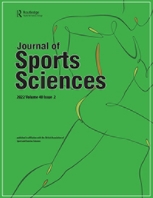Ferioli D1, Rampinini E2, Bosio A2, La Torre A1, Azzolini M1,2, Coutts AJ3.
1, Department of Biomedical Sciences for Health, Università degli Studi di Milano, Milano, Italy; 2, Human Performance Laboratory, Mapei Sport Research Centre, Olgiate Olona, VA, Italy; 3, Sport and Exercise Discipline Group, University of Technology, Sydney (UTS), Australia;

ABSTRACT
This study examined the physical differences in adult male basketball players of different competitive level and playing position using a large cohort. In the middle of the regular season, 129 players from four different Divisions completed a Yo-YoIR1 and, after 3-to-8 days, they performed a 6-min continuous running test (Mognoni’s test), a counter-movement jump (CMJ) test and a 5-min High-intensity Intermittent running test (HIT). Magnitude-based inferences revealed that differences in HIT were very likely moderate between Division I and II and likely small between Division II and III. The differences in absolute peak power and force produced during CMJs between Division I and II and between Division II and III were possibly small. Differences in Yo-YoIR1 and Mognoni’s test were very likely-to-almost certain moderate/large between Division III and VI. We observed possibly-to-likely small differences in HIT and Mognoni’s test between guards and forwards and almost certainly moderate differences in absolute peak power and force during CMJs between guards and centres. The ability to sustain high-intensity intermittent efforts (i.e. HIT) and strength/power characteristics can differentiate between competitive level, while strength/power characteristics discriminate guards from forwards/centres. These findings inform practitioners on the development of identification programs and training activities in basketball.
J Sports Science 2018 Nov. Epub 2018 Apr 26;
PMID: 29697296 DOI: 10.1080/02640414.2018.1469241